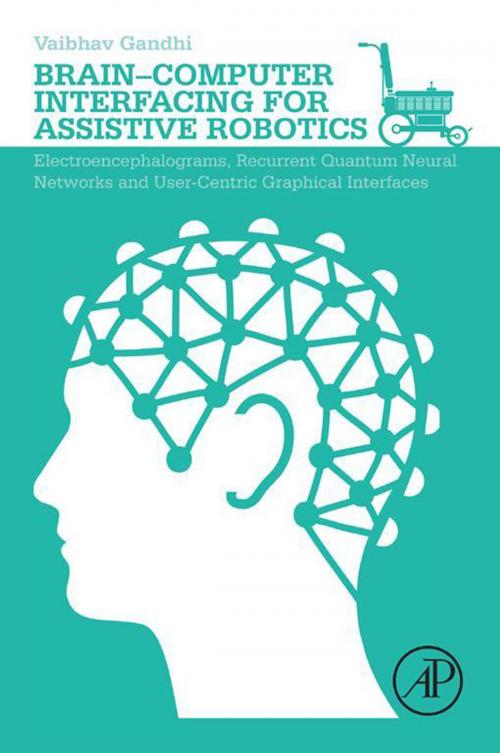Brain-Computer Interfacing for Assistive Robotics
Electroencephalograms, Recurrent Quantum Neural Networks, and User-Centric Graphical Interfaces
Nonfiction, Computers, Advanced Computing, Artificial Intelligence, Health & Well Being, Medical, Specialties, Internal Medicine, Neurology| Author: | Vaibhav Gandhi | ISBN: | 9780128015872 |
| Publisher: | Elsevier Science | Publication: | September 24, 2014 |
| Imprint: | Academic Press | Language: | English |
| Author: | Vaibhav Gandhi |
| ISBN: | 9780128015872 |
| Publisher: | Elsevier Science |
| Publication: | September 24, 2014 |
| Imprint: | Academic Press |
| Language: | English |
Brain-computer interface (BCI) technology provides a means of communication that allows individuals with severely impaired movement to communicate with assistive devices using the electroencephalogram (EEG) or other brain signals. The practicality of a BCI has been possible due to advances in multi-disciplinary areas of research related to cognitive neuroscience, brain-imaging techniques and human-computer interfaces. However, two major challenges remain in making BCI for assistive robotics practical for day-to-day use: the inherent lower bandwidth of BCI, and how to best handle the unknown embedded noise within the raw EEG.
Brain-Computer Interfacing for Assistive Robotics is a result of research focusing on these important aspects of BCI for real-time assistive robotic application. It details the fundamental issues related to non-stationary EEG signal processing (filtering) and the need of an alternative approach for the same. Additionally, the book also discusses techniques for overcoming lower bandwidth of BCIs by designing novel use-centric graphical user interfaces. A detailed investigation into both these approaches is discussed.
- An innovative reference on the brain-computer interface (BCI) and its utility in computational neuroscience and assistive robotics
- Written for mature and early stage researchers, postgraduate and doctoral students, and computational neuroscientists, this book is a novel guide to the fundamentals of quantum mechanics for BCI
- Full-colour text that focuses on brain-computer interfacing for real-time assistive robotic application and details the fundamental issues related with signal processing and the need for alternative approaches
- A detailed introduction as well as an in-depth analysis of challenges and issues in developing practical brain-computer interfaces.
Brain-computer interface (BCI) technology provides a means of communication that allows individuals with severely impaired movement to communicate with assistive devices using the electroencephalogram (EEG) or other brain signals. The practicality of a BCI has been possible due to advances in multi-disciplinary areas of research related to cognitive neuroscience, brain-imaging techniques and human-computer interfaces. However, two major challenges remain in making BCI for assistive robotics practical for day-to-day use: the inherent lower bandwidth of BCI, and how to best handle the unknown embedded noise within the raw EEG.
Brain-Computer Interfacing for Assistive Robotics is a result of research focusing on these important aspects of BCI for real-time assistive robotic application. It details the fundamental issues related to non-stationary EEG signal processing (filtering) and the need of an alternative approach for the same. Additionally, the book also discusses techniques for overcoming lower bandwidth of BCIs by designing novel use-centric graphical user interfaces. A detailed investigation into both these approaches is discussed.
- An innovative reference on the brain-computer interface (BCI) and its utility in computational neuroscience and assistive robotics
- Written for mature and early stage researchers, postgraduate and doctoral students, and computational neuroscientists, this book is a novel guide to the fundamentals of quantum mechanics for BCI
- Full-colour text that focuses on brain-computer interfacing for real-time assistive robotic application and details the fundamental issues related with signal processing and the need for alternative approaches
- A detailed introduction as well as an in-depth analysis of challenges and issues in developing practical brain-computer interfaces.















